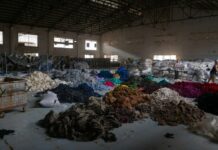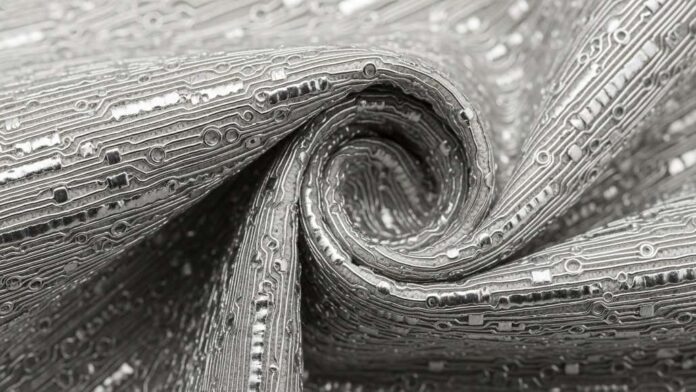As the boundaries between fashion and technology blur, fabrics are no longer just passive materials but active enablers in the evolution of e-textiles. This article explores the foundational role of fabrics in embedding electronics into textiles, enabling intelligent garments and next-generation wearable technology. From smart medical gear to military applications and fashion-forward innovation, fabrics are at the heart of this digital-textile revolution.
Fabrics Powering the Future of E-Textiles
Fabrics have come a long way from the days of serving as mere coverings or expressions of style. In the 21st century, they are the backbone of an emerging industry where textiles and electronics are fused into a new kind of fabric—one that can think, sense, react, and even communicate. This is the world of e-textiles, and at its core lies the often overlooked hero: the fabric itself.
From Passive to Active: The Evolution of Fabrics
Traditional fabrics are designed for comfort, durability, and aesthetic appeal. E-textiles, however, demand more. The fabric in an electronic textile must accommodate and interact with embedded components such as sensors, actuators, microcontrollers, and conductive threads. It must withstand repeated washing, resist stretching or breaking of circuits, and remain comfortable against the skin.
“The future of wearable electronics depends on how smart our fabrics can become,” said Leah Buechley, former MIT Media Lab researcher and inventor of the LilyPad Arduino. Her pioneering work underlines the significance of integrating hardware with soft, pliable substrates that do not compromise wearability.
What makes fabrics suitable for such transformation? The answer lies in material science. Fibers can be spun with conductive polymers or metals like silver and copper, forming threads that carry current without sacrificing flexibility. Fabrics can also be coated with nanomaterials, enabling them to sense temperature, pressure, or moisture.
The Fabric-Electronics Symbiosis
In e-textiles, electronics must conform to the rules of wearability: softness, breathability, and flexibility. These aren’t qualities associated with traditional electronic components, which are rigid, fragile, and heat-sensitive. To make the marriage work, innovation is focused not just on the electronics but also on re-engineering the fabrics.
Consider how conductive yarns can form circuit pathways directly within the weave. Stretchable fabrics allow for shape-shifting sensors that monitor muscle movement or vital signs. Moisture-wicking textiles can serve dual purposes in fitness wear, offering both performance and biofeedback data through embedded sweat-analyzing sensors.
Importantly, fabrics also act as protective casings, shielding sensitive electronics from mechanical stress and environmental factors like humidity or heat. Hybrid fabrics that combine synthetics like polyester with conductive materials are ideal for such roles.
Real-World Applications Are Accelerating
The e-textile space is no longer experimental. It’s commercial, and fabrics are the launchpads for some of the most disruptive innovations in wearable tech:
-
Healthcare: Smart shirts equipped with ECG or respiratory sensors are enabling continuous patient monitoring outside of clinical settings.
-
Military and Defense: Fabrics embedded with sensors can detect wounds, monitor fatigue, and even power small devices using body movement.
-
Athletics: Performance garments embedded with real-time biometric trackers are shaping the training regimens of elite athletes.
-
Fashion and Design: From LED-embedded couture to mood-sensitive color-changing garments, designers are pushing creative boundaries.
British fashion tech pioneer Francesca Rosella once said, “We don’t just wear clothing anymore—we wear identity, connectivity, and function.” That perspective captures the essence of what fabrics in e-textiles are facilitating: a shift from fashion as statement to fashion as system.
Challenges Along the Seam
Despite remarkable progress, challenges remain. Integrating electronics into fabrics while preserving their tactile quality and comfort is complex. Washing durability is a major issue—many embedded components can’t withstand detergents or tumbling cycles.
Battery life and energy harvesting are also pressing concerns. Fabrics are now being developed to generate power from movement or ambient light, but scaling these technologies affordably is an ongoing hurdle.
Manufacturing scalability is another bottleneck. Stitching a circuit into a hoodie might be feasible for a prototype, but mass-producing hundreds of thousands of such garments requires industrial rethinking of the textile supply chain.
The Market Outlook Is Woven With Promise
According to a 2024 report by MarketsandMarkets, the global e-textile market is projected to grow from $3.6 billion in 2023 to $15.2 billion by 2030, at a CAGR of 23.4%. This surge is driven by increased demand in health monitoring, sports, and defense sectors.
Asia-Pacific leads in manufacturing innovation, especially in countries like China and South Korea. Meanwhile, North America and Europe are spearheading R&D, with institutions like MIT, Stanford, and EPFL pioneering smart textile tech.
Investments are also picking up. Major apparel companies such as Levi’s, Nike, and Under Armour are exploring e-textiles as part of their next-gen product lines. Even tech giants like Google (with its Jacquard project) are weaving their interests into this space.
Beyond 2030: A Fabric-Centric Future
As AI and IoT become embedded into our everyday environments, fabrics may play an even bigger role than screens or wearables. Imagine clothing that adapts to your body temperature and emotion, or hospital gowns that provide real-time diagnostics. Even home furnishings may evolve—with curtains that control lighting and sofas that monitor your posture.
The vision is not far-fetched. As futurist Ray Kurzweil once said, “Technology will become so advanced, it will disappear into the background.” Fabrics, literally wrapped around us, are the ideal medium for this invisible tech revolution.
One of the most promising frontiers is biodegradable e-textiles. Researchers are developing eco-friendly materials that offer full functionality without contributing to electronic waste—pushing sustainability to the forefront of tech innovation.
Conclusion: Weaving Technology Into the Everyday
The role of fabrics in e-textiles goes far beyond being mere holders of embedded electronics. They are enablers, protectors, and amplifiers of function. They transform the rigid into the wearable and the complex into the comfortable. As this synergy matures, the fabric itself becomes the technology.
From healthcare to fashion, defense to daily life, the fabrics of the future are not just materials—they are interfaces. And in this quiet revolution, our clothes may soon know more about us than our smartphones ever could.


































